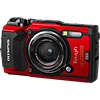Main
Model
Price
Advantages
launch
Announced
Body type
Camera subcategory
Sensor
Effective pixels
Max resolution
Sensor size
Sensor type
Processor
Image ratio w:h
Other resolutions
Sensor photo detectors
Image
ISO
Boosted ISO (minimum)
Boosted ISO (maximum)
White balance presets
Custom white balance
Image stabilization
Image stabilization notes
Uncompressed format
JPEG quality levels
Photography features
Minimum shutter speed
Maximum shutter speed
Aperture priority
Shutter priority
Manual exposure mode
Subject / scene modes
Built-in flash
External flash
Flash modes
Continuous drive
Self-timer
Metering modes
Exposure compensation
WB Bracketing
Maximum shutter speed (electronic)
AE Bracketing
Screen / viewfinder
Articulated LCD
Screen size
Screen dots
Touch screen
Screen type
Live view
Viewfinder type
Viewfinder coverage
Viewfinder resolution
Videography features
File Format
Microphone
Speaker
Resolutions
Optics & Focus
Focal length (equiv.)
Optical zoom
Maximum aperture
Autofocus
Digital zoom
Manual focus
Normal focus range
Macro focus range
Number of focus points
Focal length multiplier
Physical
Weight (inc. batteries)
Dimensions
Environmentally sealed
Battery
Battery details
Battery Life (CIPA)
Storage
Storage types
Connectivity
USB
HDMI
Microphone port
Headphone port
Wireless
Wireless notes
Remote control
Other features
Orientation sensor
Timelapse recording
GPS
GPS notes
Samples
Videos
Summary
The Q (Typ 116) highest resolution of 6000 x 4000 pixels (24 megapixels) is better in comparison with the Tough TG-5 maximum resolution of 4000 x 3000 pixels (12 megapixels). The Q (Typ 116) is equipped with larger sensor than the Tough TG-5: Full frame (36 x 24 mm) versus 1/2.3' (6.17 x 4.55 mm). It is the most important difference between these models because large sensor allows you to shoot pictures of the more professional quality. The Q (Typ 116) has a wider ISO range of 100-50000 than 100-12800 ISO range of the Tough TG-5. This ISO range allow the photographer to shoot better pictures in dim light conditions. The Q (Typ 116) offers more focus points than the Tough TG-5: 49 vs 25. More focus points means more convenience while attempting to focus on objects that are not centred.
The Q (Typ 116) screen is better as it offers more screen dots 1,040,000 in compare to 460,000 dots of the Tough TG-5 screen. The higher dot count screen is better for reviewing pictures on your camera. The Q (Typ 116) has a touch screen. The Q (Typ 116) offers better lowest (30 seconds) and highest (1/2000 second) shutter speeds.
The Tough TG-5 has built-in flash. The Q (Typ 116) supports external flash. An external flash provides great control over the exposure and lighting of the subject in dim light and in bright light conditions when the photographer needs to fill-flash. The Tough TG-5 weighs 250g which is 390g less in comparison with the weight of the Q (Typ 116). The Tough TG-5 is produced with built-in GPS. This feature can be useful if the camera owner is a traveller, to be able to go into the photo metadata and find out exactly where a picture was produced.
The Leica Q (Typ 116) has 12 advantages and the Tough TG-5 only 4 so the Q (Typ 116) will be the best choice. Get the list of the best offers on Amazon.


